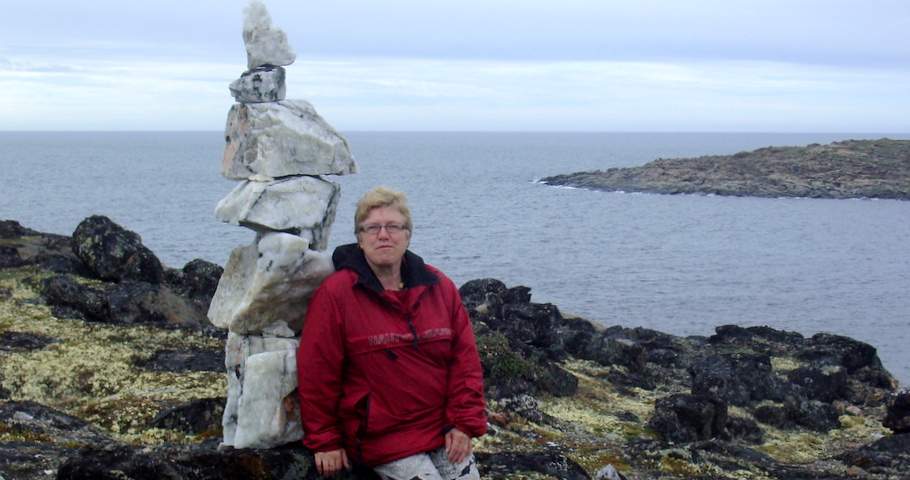Perhaps, the people of the North haven’t always been listened to like they should because they do not talk like us or think like us and they do not act like us when pushed against a wall, and so, they have not been heard. They are so far away and there is little information trickling south about them.
The plight of the Northern people is easy to dismiss because we don’t see them and like someone pointed out, the information is skewed.
At that rate of listening coming from people who claim to be global citizens (live experience in MapleCreek, Sask) when they make contributions to help refugees or people with great needs, the Canadian Inuit will still be trying to correct their situation when the next century comes along. No one argues that these refugees have great needs but isn't it reasonable to expect that we take care of our own first?
There must be numbers on how much they cost in health services, considering the social problems their housing problems create and what their unemployment rate brings, and how it is affecting women’s and children’s physical and mental health. Nothing goes fast in the North, services are not rendered as they are needed. For example, this year the Inuit were given only 140 housing units for the 14 communities, but 880 more are needed for their demographics.
Show me a woman who can stay healthy when 4 generations live under the same roof. Show me a child who can succeed in school when he does not have a square inch to himself in his home. Show me a man who is steady and strong when he does not have enough money to own a boat to go off fishing or an ATV (all-terrain vehicle) to go hunting for subsistence foods.
Children’s health and well-being are associated with housing quality, suitability and affordability. Furthermore, research has shown a link between child developmental problems, low levels of safety and cohesion and other risk factors.
Maybe, it doesn’t show up yet in statistics because there are few resources who compile data. There is a lack of clinical experience by Inuit for treatment up there, but eventually, their young ones grow up and when not inclined to commit suicide, they come south to Montreal, Ottawa, Toronto or Edmonton and like I have heard many times over, our health dollars are extended to resolve their issues. Unfortunately, when they go home to no support, the cycle is oftentimes repeated.
In my view, we are failing more people and we keep pumping money into helping poor countries while our own children are struggling for their human rights right under our nose. The life outcomes of the Inuit children have a 10-year lower life expectancy than other Canadians. We promote education, but there is no place in their home to study. Regularly, someone comes along and makes claims about the infectious diseases; environment/environmental exposures; nutrition; birth outcomes; tobacco; chronic disease; health care; policies and human resources and their interventions. But so far, no one has corrected these social determinants of mental health and wellbeing. In 2012, it was recorded that sixty-eight percent of Inuit children aged 6–14 years of age experienced being hungry, of which 57% reported being hungry every few months or more.
Where they live and how they live do not give them a chance to fully absorb the issue of how housing and its overcrowding affects the lives of their mothers and the parenting they get. The factors of overcrowding and lack of housing increase the higher risk of violence and economic insecurity of women and children and the negative effects of overcrowding increase the risk of poor health. That is a triple disadvantage: their gender, their location and the interactions between the two. Add to those additional barriers, racism, poverty or lack of education, the negative effects on their health multiply. Their trauma all in all includes our indifference.
Women speak of the financial, emotional and social costs from the frequent need to travel away from home to escape violence and its comebacks. Travelling to escape violence is also related to high levels of stress associated with being away from the family, especially during a crisis. These multiple costs and inconveniences, largely borne by women who maintain and monitor the home and emotional climate of the family.
Good health for Inuit women means addressing poverty and financial insecurity. Unemployment, low wages and seasonal work impact their health. Inuit women and their families cannot maintain their health in the absence of financial security. Women’s experiences of healthy living go far beyond visits to the healthcare providers. Burdened by poverty and domestic violence due to overcrowding, Inuit women and children are particularly disadvantaged.
Social policies outside the health circuit influence finance, labour, social services and have as much influence on health as service provision. These women are largely ignored and treated as if they were invisible. When the government takes from Jane to give to Peter, the perspective of these women’s lives and concerns mainly disappear in the policy decision-making process. Their voices are rarely heard. If they were listened to, they might have insightful solutions to their crises. I would think this is an essential step.
Because these women are underrepresented among elected politicians and other decision-makers, their political value is ignored, and their fate is sealed. Children don’t have a VOICE, so they bring nothing to have us turn to them. Improving access to services and programs targeted at children, youth and their parents must be a priority in efforts to address the health inequities faced by Inuit (Mary Simon, 2012)








No comments:
Post a Comment